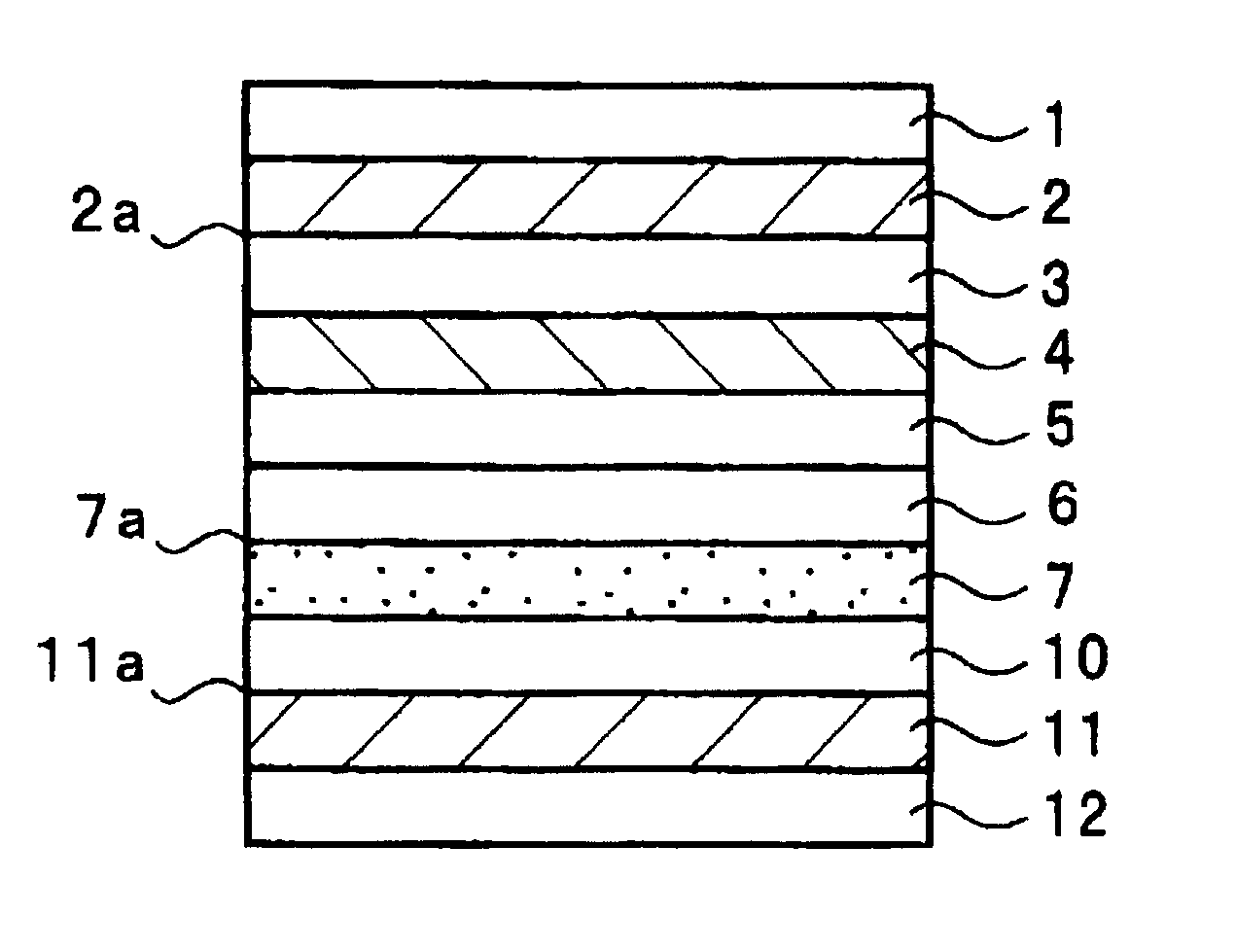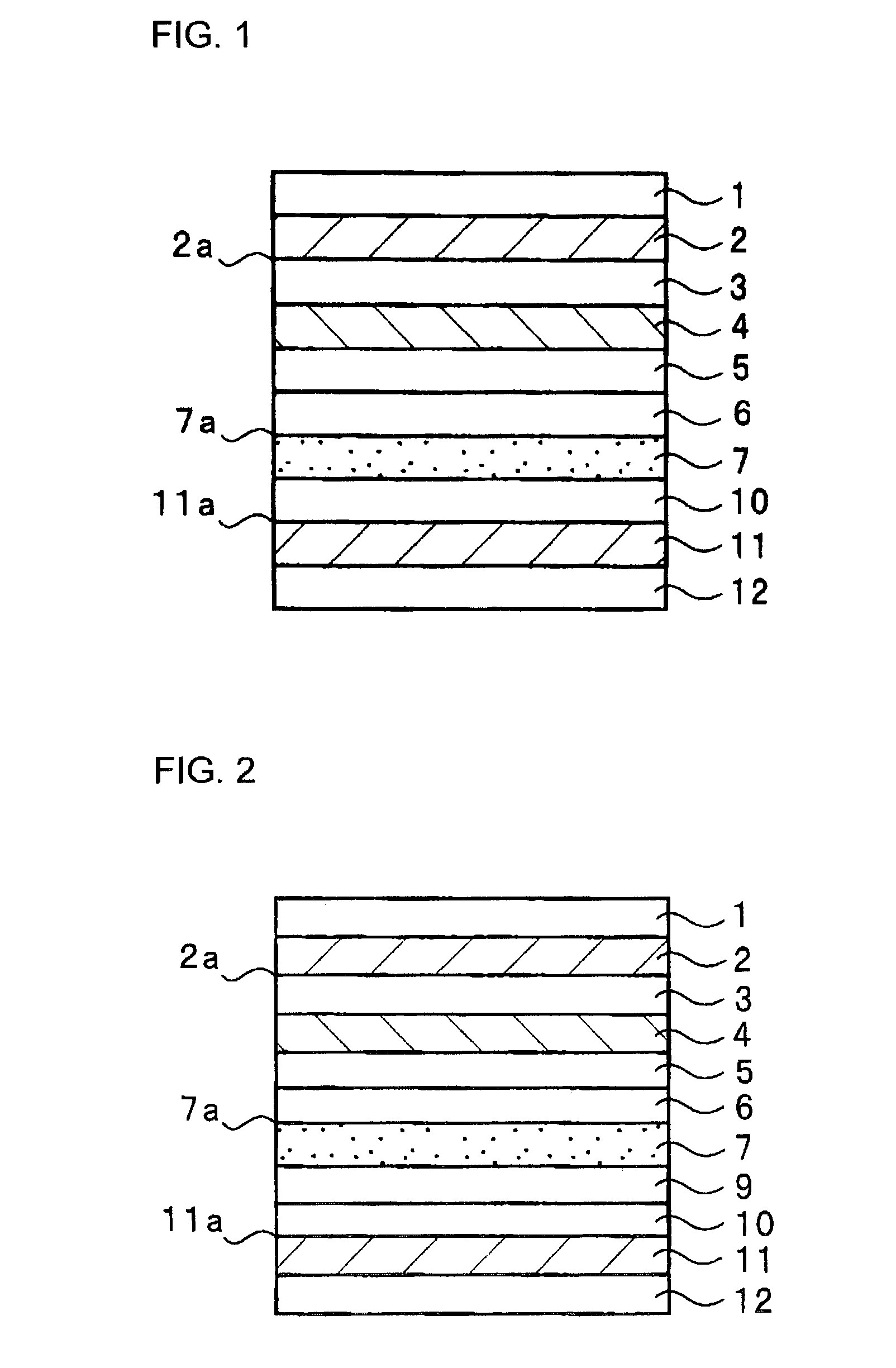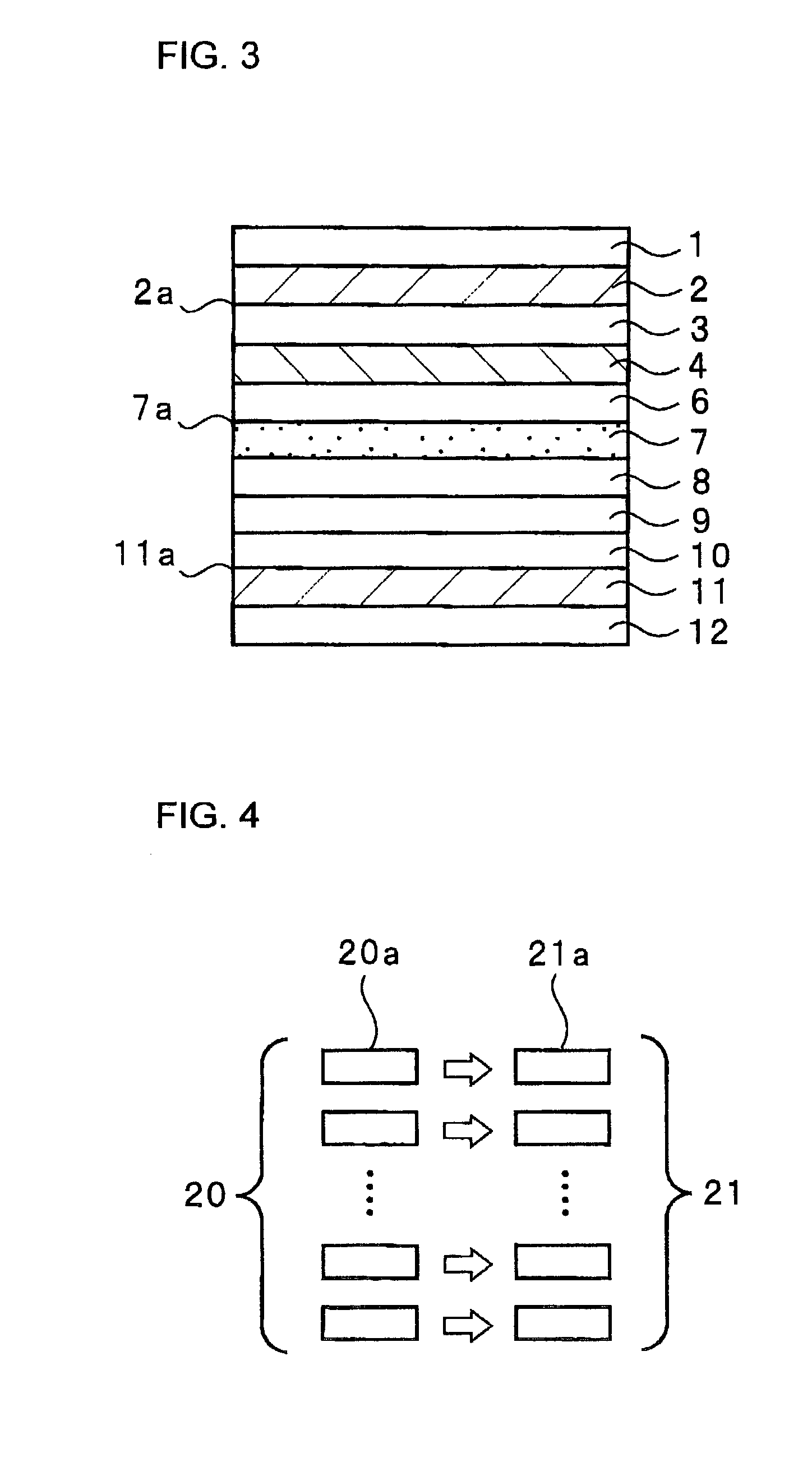Wavelength variable light source
a light source and variable technology, applied in the field of light sources, can solve the problems of difficult to modulate the width of the light emitting spectrum is great, and it is difficult to use the light source, so as to achieve the effect of narrowing the width of the light emitting spectrum and easily changing the light emitting wavelength
- Summary
- Abstract
- Description
- Claims
- Application Information
AI Technical Summary
Benefits of technology
Problems solved by technology
Method used
Image
Examples
example 1
[0025]FIG. 1 is a schematic cross-sectional view showing a wavelength variable light source in a preferred embodiment according to the present invention. A thin film (having a thickness of 200 nm) made of gold serving as a first electrode 2 is formed on a substrate 1 made of glass by sputtering method. On the first electrode 2, a piezoelectric thin film 3 (having a thickness of 50 nm) having light transmittance is formed as refractive index modulating means by reactive sputtering method with an electron cyclotron resonance (abbreviated as “ECR”) plasma in an atmosphere of argon and nitrogen. The piezoelectric thin film 3 is made of aluminum nitride (AlN). On the piezoelectric thin film 3, a transparent conductive thin film made of In2O3—SnO2 (ITO) (having a thickness of 50 nm) is formed as a second electrode 4 by sputtering method.
[0026]On the second electrode 4, a hole injecting layer 5 (having a thickness of 9 nm) made of copper phthalocyanine (CuPc) expressed by the following che...
example 2
[0050]FIG. 2 is a schematic cross-sectional view showing a wavelength variable light source in another preferred embodiment. A thin film (having a thickness of 50 nm) made of gold serving as a first electrode 2 was formed on a (110) surface of a sapphire substrate serving as a substrate 1 by sputtering method. Subsequently, on the first electrode 2 was formed a thin film (having a thickness of 74 nm) as a piezoelectric thin film 3 made of zinc oxide (ZnO) by reactive sputtering method with an electron cyclotron resonance (abbreviated as “ECR”) plasma in an atmosphere of argon and oxygen. On the piezoelectric thin film 3, an ITO thin film (having a thickness of 50 nm) was formed serving as a second electrode 4 by sputtering method.
[0051]On the second electrode 4, the same hole injecting layer 5 and the same hole transporting layer 6, as those in Example 1, were formed.
[0052]On the hole transporting layer 6, a mixture light emitting layer (having a thickness of 35 nm) was formed by a ...
example 3
[0066]FIG. 3 is a schematic cross-sectional view showing a wavelength variable light source in a further preferred embodiment. A thin film (having a thickness of 50 nm) made of gold as a first electrode 2 was formed on a (110) surface of a sapphire substrate as a substrate 1 by sputtering method. Subsequently, on the first electrode 2, a thin film (having a thickness of 50 nm) made of zinc oxide (ZnO) was formed as a piezoelectric thin film 3 by the same reactive sputtering method as in Example 2. On the piezoelectric thin film 3, an ITO thin film (having a thickness of 48 nm) was formed as a second electrode 4 by sputtering method. Thereafter, a hole transporting layer 6 (having a thickness of 20 nm) made of NPB was formed.
[0067]On the hole transporting layer 6, a mixture light emitting layer (having a thickness of 30 nm) was formed as a light emitting layer 7 containing 94% by mass of 4,4′-bis(carbazol-9-yl)-biphenyl (CBP) expressed below by a chemical formula and 6.0% by mass of ...
PUM
 Login to View More
Login to View More Abstract
Description
Claims
Application Information
 Login to View More
Login to View More - R&D
- Intellectual Property
- Life Sciences
- Materials
- Tech Scout
- Unparalleled Data Quality
- Higher Quality Content
- 60% Fewer Hallucinations
Browse by: Latest US Patents, China's latest patents, Technical Efficacy Thesaurus, Application Domain, Technology Topic, Popular Technical Reports.
© 2025 PatSnap. All rights reserved.Legal|Privacy policy|Modern Slavery Act Transparency Statement|Sitemap|About US| Contact US: help@patsnap.com



